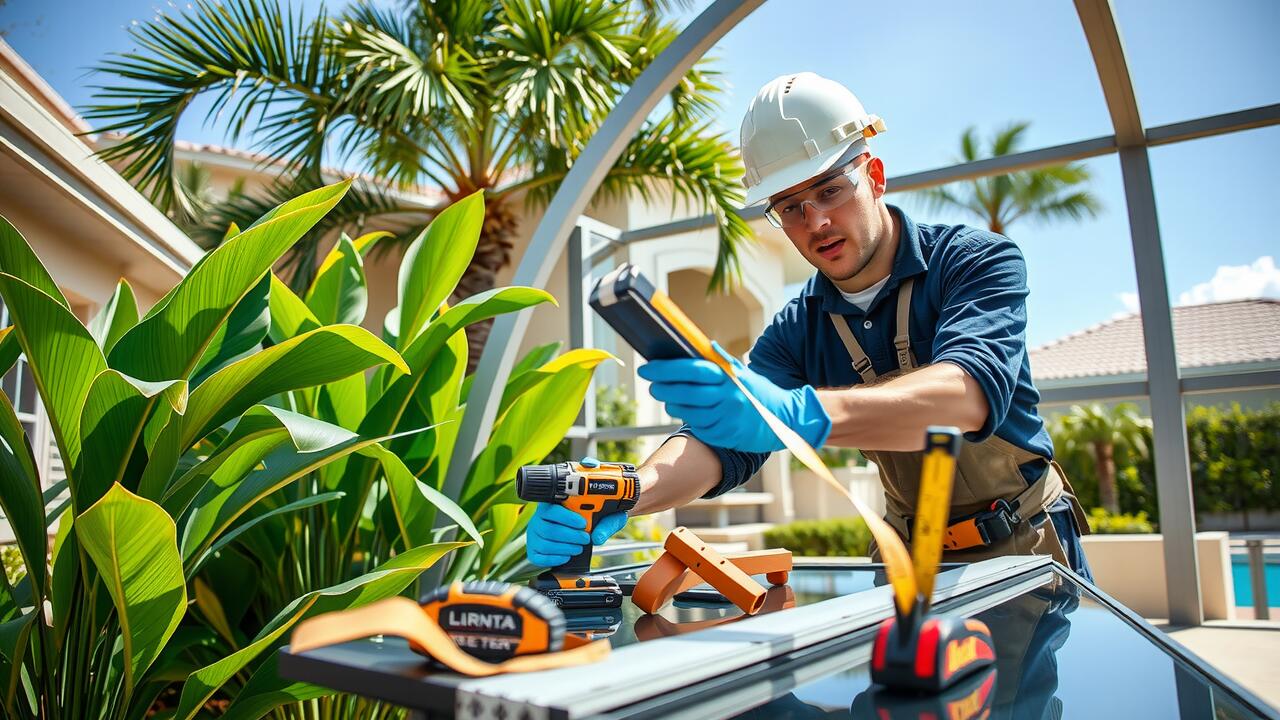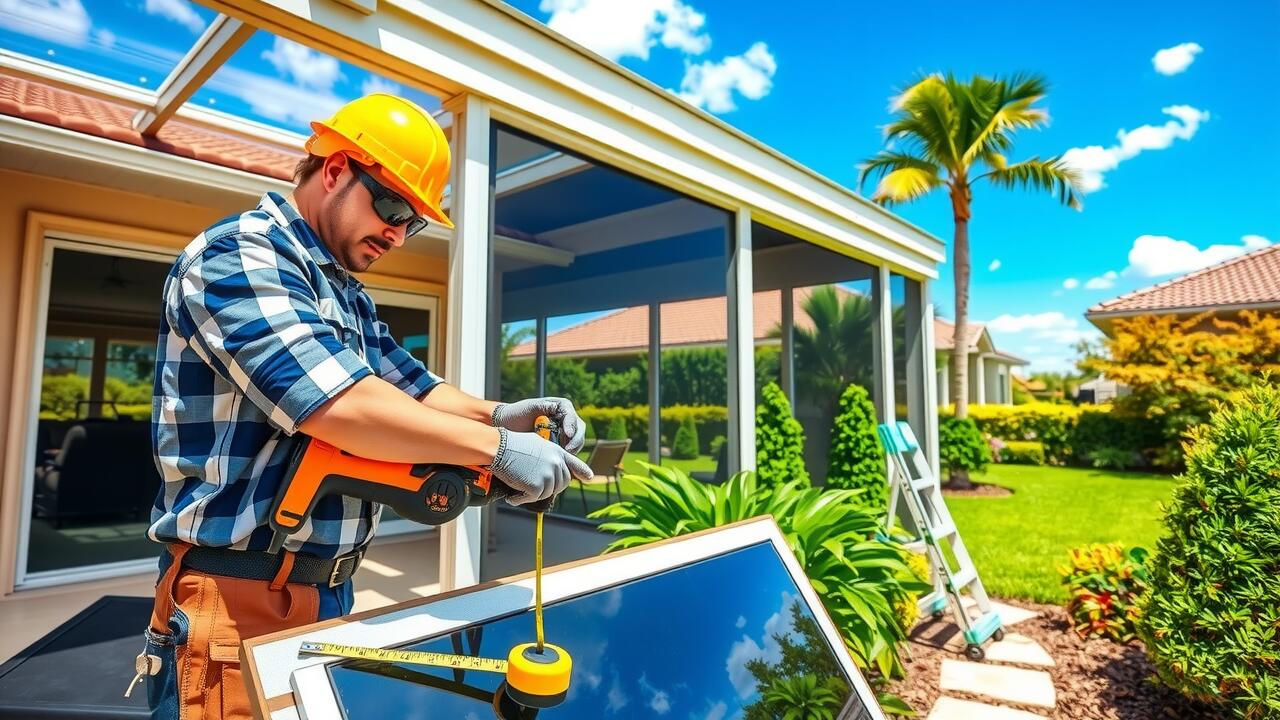
Regional Considerations for Lanai Installation
When considering the installation of lanai enclosures, regional factors play a significant role in both the design and material selection. Areas with high humidity or frequent rainfall may require specific types of materials that resist moisture and mold. Conversely, regions with milder climates might allow for more varied designs, focusing on aesthetics alongside functionality. Local building codes and zoning laws must also be taken into account, which can dictate the type of lanai enclosures one can construct.
Additionally, the popularity and perceived value of lanai enclosures can vary greatly across different regions. In places with a strong culture of outdoor living, these additions may be seen as essential features that enhance property desirability. In contrast, areas where outdoor space is less utilized might not afford the same value. Homeowners should evaluate local real estate trends to understand how a lanai might impact their specific market before making an investment.
Climate and Geography’s Role in Value
The value added by a lanai can significantly vary based on climate and geography. In warm, tropical locations, outdoor living spaces are highly sought after. Homebuyers in these regions often view lanai enclosures as an extension of the indoor living area, providing a seamless transition between the home and the outdoors. Areas with favorable weather conditions year-round tend to see higher appreciation for properties featuring these structures.
Conversely, in colder climates, the demand for lanai enclosures may not be as pronounced. However, interest in such spaces can still exist if they are designed to accommodate seasonal weather changes. Homeowners might invest in heating systems and insulation for extended use during cooler months, which could enhance their home’s allure to prospective buyers. Ultimately, regional weather patterns play a crucial role in determining how much value a lanai adds to a home.
Cost Analysis of Building a Lanai
Building a lanai involves several cost considerations that homeowners must evaluate before moving forward with the project. The initial expenses include materials, labor, and design elements tailored to the specific needs of the homeowner. Popular choices for lanai enclosures often feature aluminum frames and screening, which can enhance the outdoor experience while providing protection against insects and the elements. Homeowners must also consider any additional features like lighting, ceiling fans, and landscaping, as these can contribute significantly to the overall cost.
Potential return on investment can be substantial when zoning in on the right features and materials. A well-constructed lanai not only enhances the aesthetics of a property but also increases its market appeal. Buyers in warmer climates often look for outdoor living spaces, making lanai enclosures a valuable asset for resale. However, the actual return can vary based on regional market conditions and the quality of the installation, emphasizing the necessity of a thorough market analysis before beginning construction.
Initial Investment vs. Potential Return
The initial investment in lanai enclosures can vary significantly based on materials, design, and size. Homeowners often find that their choices dictate the overall cost. Quality materials, such as aluminum and tempered glass, may demand a higher upfront price. However, these options tend to enhance the aesthetic appeal and functional longevity of the structure. While the initial expense can be substantial, many view this as a long-term investment in their property.
Potential returns from installing lanai enclosures can also be quite favorable. Home buyers often appreciate the added living space and outdoor connection provided by such structures. In certain markets, a well-designed lanai can lead to higher appraisals and faster sales. Investors often focus on the improvement in overall home value, which can offset the initial investment. The appeal of outdoor entertainment areas may elevate demand, especially in regions with favorable climates.
Maintenance and Longevity of a Lanai
Maintenance of a lanai is crucial for ensuring its longevity and aesthetic appeal. Regular cleaning helps prevent the buildup of dirt and mold, which can lead to deterioration over time. The materials used in lanai enclosures play a significant role in their resilience. High-quality frames and screens resist wear and tear, while proper sealing protects against the elements. Homeowners should also inspect for any signs of damage periodically to address issues before they escalate.
Longevity often depends on local climate conditions. In areas prone to extreme weather, additional care may be necessary to protect lanai enclosures from strong winds and heavy rain. Using weather-resistant materials can enhance durability. Routine maintenance such as screen replacement and painting can further extend the life of the structure. Investing time in upkeep minimizes long-term repair costs and preserves the beauty of the lanai, making it a valuable asset for any home.
Factors Influencing Durability and Upkeep
The durability and upkeep of a lanai are significantly influenced by the materials used in its construction. For instance, aluminum and vinyl materials often provide greater resistance against the elements compared to wood, which may require more frequent maintenance to prevent rot and decay. The choice of flooring also plays a crucial role; materials like tile or concrete can withstand wear better than softer options such as wood or carpet. Proper installation techniques can further enhance the longevity of lanai enclosures, ensuring they withstand fluctuations in weather and use.
Environmental factors affect maintenance needs as well. Regions with high humidity or coastal locations may experience more wear and tear, leading to quicker degradation of materials. Regular inspections are essential for maintaining the integrity of lanai enclosures, allowing homeowners to catch issues early before they escalate. Seasonal cleaning and applying protective coatings can also extend the lifespan of the lanai, making it a worthwhile investment for those looking to enhance their outdoor living space.
FAQS
What is a lanai?
A lanai is a type of porch or veranda that is often enclosed and can be used for relaxation and entertaining. It is commonly found in tropical and subtropical climates.
How does a lanai affect the overall value of my home?
A lanai can enhance the overall value of your home by increasing its usable outdoor space and appeal, especially in areas where outdoor living is popular.
Are there specific regions where a lanai adds more value?
Yes, regions with warm climates and outdoor lifestyles, such as Florida or Hawaii, typically see a higher return on investment from a lanai compared to colder regions.
What are the costs associated with building a lanai?
The costs can vary widely depending on materials, size, design, and local labor rates. It’s important to conduct a detailed cost analysis to assess your specific situation.
How can I ensure the longevity of my lanai?
Regular maintenance, including cleaning and timely repairs, along with using durable materials, can help extend the lifespan of your lanai and maintain its value.
